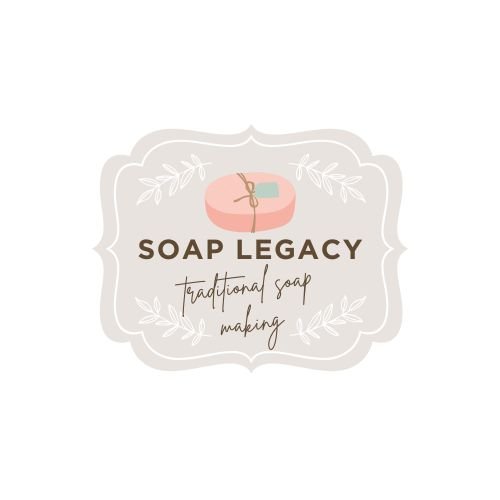Colonial soap makers relied on seven essential tools: ash hoppers for extracting lye, cast iron kettles for boiling mixtures, wooden stirring paddles for safe mixing, lye testing implements like eggs or potatoes, wooden soap molds for shaping bars, cutting tools for creating uniform pieces, and curing racks for proper drying. These handcrafted tools reflect the resourcefulness of early American households and allowed families to transform basic ingredients into valuable household necessities. Discover how these simple tools revolutionized home hygiene for generations.
Ash Hoppers & Leaching Barrels

Two critical tools formed the foundation of traditional soap making: ash hoppers and leaching barrels.
These ingenious devices allowed colonists to extract lye, the essential alkali needed for saponification, from hardwood ashes.
You'd typically build your ash hopper from wood or metal, designed to hold layers of ashes while allowing water to flow through.
The hopper would be lined with hay to prevent ashes from escaping while permitting the dissolved potash to drip through.
After pouring water over the ashes, the resulting lye solution collected in containers below.
To test if your lye was concentrated enough for soap making, you'd float an egg or potato in the solution.
Once at proper strength, you could boil it further to increase potency before combining with fats to create soap.
Cast Iron Kettles & Rendering Pots

You'll find these hefty vessels passed down through colonial families, prized for their ability to withstand decades of soap-making fires while maintaining structural integrity.
Your cast iron kettle's wide base and thick walls distribute heat evenly, preventing scorching of fats and ensuring consistent saponification during the critical boiling process.
Whether suspended from a tripod or nestled in glowing coals, these versatile cauldrons served as mobile soap factories, allowing you to position your operation wherever suitable firewood and ash resources were available.
Durability Across Generations
When exploring the heritage of traditional soap making, cast iron kettles and rendering pots stand as remarkable symbols of craftsmanship built to last centuries.
You'll find many of these colonial-era tools still functioning today, a demonstration of their exceptional durability.
These heavyweight vessels weren't just practical—they were investments passed through generations.
The thick cast iron construction enabled soap makers to maintain the consistent heat distribution essential for successful saponification, preventing batch failures during the critical 8-hour boiling process.
Cast iron kettles and rendering pots survived harsh conditions that would destroy lesser materials.
Their resistance to corrosion despite exposure to caustic lye and animal fats made them irreplaceable in colonial households.
Today's artisanal soap makers still seek these heirloom tools, valuing their proven performance across centuries.
Essential Heat Distribution
At the heart of traditional soap making's success lies the exceptional heat distribution properties of cast iron kettles and rendering pots. You'll find these tools were indispensable in colonial households, where their unmatched heat retention guaranteed consistent temperatures throughout the saponification process.
Your rendering pots would first boil animal fats with water, effectively separating impurities to produce clean lard.
Then, cast iron kettles took center stage, maintaining steady heat across several gallons of mixture without warping, even during extended boiling periods over open flames.
These durable vessels required regular seasoning to prevent rust, but this maintenance paid off through generations of use.
Their heavy construction distributed heat evenly, eliminating hot spots that might otherwise ruin your soap batch—a critical advantage when producing essential household supplies.
Versatile Outdoor Cauldrons
Traditional soap makers relied heavily on outdoor cauldrons that served multiple essential functions beyond mere containers. You'd find these cast iron kettles strategically positioned away from homes to minimize fire risks while boiling the vital mixture of fats and lye.
The durability of these vessels allowed them to withstand intense heat required for proper saponification.
- Cast iron cauldrons retained heat effectively, ensuring consistent temperatures throughout the boiling process
- Large capacity allowed for rendering multiple batches simultaneously, increasing production efficiency
- Outdoor placement simplified disposal of waste materials from the soap-making process
- Specialized rendering pots were designed specifically for purifying animal fats before combining with lye
These versatile tools exemplified colonial ingenuity, combining practicality with efficiency in what was an essential household industry.
Wooden Stirring Paddles & Mixing Sticks

Colonial soap makers relied heavily on wooden stirring paddles and mixing sticks as their primary tools for combining lye and fats during the saponification process.
These essential implements were typically handcrafted from local hardwoods, chosen specifically for their durability and resistance to lye's corrosive nature.
You'll notice these tools were designed with practicality in mind. The extended length of stirring paddles kept soap makers at a safe distance from the caustic, hot mixture, preventing painful burns.
The flat ends of mixing sticks guaranteed thorough blending, creating consistent soap batches.
This equipment reflected the resourcefulness that defined colonial life. Families wouldn't purchase specialized tools when they could fashion their own from readily available materials, making wooden implements a perfect solution for colonial soap making needs.
Lye Testing Implements

While wooden tools facilitated the mixing process, determining the proper lye concentration represented one of the most challenging aspects of colonial soap making.
You'd rely on simple yet effective implements to test your lye solution before combining it with fats.
- Potatoes or eggs served as natural floatation testers—if they floated at the right level, your solution was ready for soap production
- Your tongue could perform a "zap test"—a strong tingling sensation warned that the lye was too alkaline
- Wooden sticks protected your testing process, as metal would react with the caustic solution
- Natural litmus paper made from plant dyes helped assess alkalinity through color changes
Clear solutions indicated readiness, while cloudy mixtures suggested impurities.
These testing methods guaranteed your soap would cleanse effectively without harming skin.
Wooden Soap Molds & Setting Frames

Artisans crafted wooden soap molds and setting frames as the final essential tools in the soap making process. These handcrafted containers, typically rectangular in shape, allowed you to form uniform bars that could be easily divided after hardening.
Colonial soap makers designed their wooden soap molds with practicality in mind, often incorporating removable sides or bottoms for seamless extraction of the finished product. You'd find these molds constructed from sturdy wood capable of withstanding both the heat and substantial weight of freshly poured soap mixtures.
Setting frames frequently accompanied the molds, providing vital support during the curing process to maintain the soap's intended shape.
Resourceful households either made these implements themselves or commissioned local carpenters to create these durable tools that exemplified colonial craftsmanship.
Cutting Wires & Dividing Tools
Two essential implements completed the soap maker's toolkit: cutting wires and dividing tools.
After your soap block solidified during the curing process, you'd need to divide it into individual bars. Cutting wires, typically made from stainless steel or copper, were stretched taut between handles to achieve clean, even cuts through hardened soap.
Colonial soap makers understood that precision mattered—uneven cuts affected both curing time and final quality. You'd often use additional dividing tools like spatulas or knives to create specific shapes before the soap fully hardened.
- Cutting wires guaranteed straight, consistent bars from large soap blocks
- Materials like flexible steel or copper provided durability and precision
- Dividing tools allowed for artistic customization of shapes and designs
- Even cuts were vital for uniform curing and professional-quality soap
Curing Racks & Drying Shelves
Once soap was poured and cut, proper curing became essential to the final product's quality.
Colonial soap makers relied on wooden curing racks and drying shelves to transform their freshly made soap into usable household products. These structures featured multiple tiers to accommodate large batches, maximizing space for the labor-intensive soap making process.
You'd find these wooden racks designed to promote air circulation around each bar, a critical factor in the saponification process. Without adequate airflow, your soap wouldn't harden correctly.
The colonial homemaker would place freshly cut soap on these shelves for several weeks in cool, dry locations, allowing excess moisture to evaporate. This patience guaranteed your soap reached the proper hardness and longevity needed for effective household use.
Frequently Asked Questions
How Did People Make Soap in Colonial Times?
You'd make soap by mixing lye made from hardwood ashes with animal fats like lard. You'd boil this mixture for 6-8 hours, testing lye strength by seeing if a potato floated.
What Did Pioneers Use to Make Soap?
You'd use animal fats like lard or tallow as your base. You'd also need lye made from hardwood ashes leached with water. Once combined in kettles over fire, you'd stir until soap formed.
What Was the Old Way of Making Soap?
You'd make soap the old way by leaching lye from wood ashes, rendering animal fats, and boiling them together until they formed a thick mass. After curing, you'd have functional, if harsh, soap.
How to Make Soap the Old Fashioned Way?
To make soap the old-fashioned way, you'll need to create lye from hardwood ashes, mix it with rendered animal fat at 125°F, stir until thickened, pour into molds, and cure for several days to weeks.
In Summary
You've now uncovered the essential tools that our colonial ancestors relied on to make soap, a crucial household product. Whether you're collecting traditional equipment or simply appreciating historical craftsmanship, these seven tools represent the ingenuity of early American homesteading. By understanding these implements, you're connecting with practical skills that sustained families for generations and witnessing how necessity drove innovation in everyday colonial life.





Leave a Reply